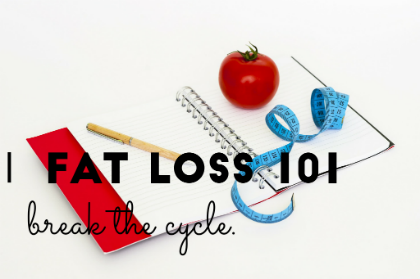Weight loss resistance. Difficulty regulating fat mass. Diabetes. Gestational Diabetes. Acne.
All of these states have something in common, dysregulation of insulin.
It is incredibly easy to get overwhelmed by the metabolism, what you should do, and what not to do in order to get yours functioning optimally. Here we will break it down into bite sized chunks so that you too can understand and optimize your metabolism.
Understanding insulins function in the body is one of the most important pieces to consider when weight loss resistance is in the picture!
Functions of Insulin throughout the body
Insulin is an anabolic hormone, meaning that it is involved in the building process. Insulin takes fuel (glucose and amino acids) in the blood stream and stores them away for later use. It builds muscle cells, through shuttling amino acids into them, and builds fat cells through stimulating fat storage. In addition, Insulin will increase glycogen storage, encourage the proliferation of skin cells, changes in skin pigmentation and can also affect an area of the brain associated with pleasure and reward. Yes! That is just the tip of the iceberg so it is clear that insulin is critical to the function of many systems in our body.
When insulin is working properly it is lifesaving. This is clear when we look at diabetes.
Function of Insulin in Diabetes
There are two types of diabetes, Type 1 is an autoimmune disease that causes damage to the pancreas, which produces insulin. This results in elevated blood sugar levels, weight loss, excessive hunger, thirst and urination. Type 2 diabetes also results in elevated blood sugar levels but in the initial stages of this disease, there is plenty of insulin circulating, it is just that the body is not listening to the message. Often times here, we see weight gain, and obesity.
In both cases we need more insulin, and better signaling, to properly regulate blood sugar. In both cases the addition of insulin will also most often result in weight gain.
This is a phenomenon that has been known by endocrinologists for many years. There is a cycle in type 2 diabetes where insulin resistance and weight gain are made much worse with the addition of an insulin prescription. This then worsens the situation and more insulin, or other medications are required to maintain blood sugar levels. Improving insulin sensitivity is the solution, and lowering circulating insulin levels is the answer. This is not always well understood or explained.
How do you lower your insulin levels?
In people who struggle with insulin sensitivity issues lowering your insulin can be THE thing that unlocks the fat storage freezer. This was the case for me. I spent many years trying all of the diets and all of the lifestyles. When I originally began to lose weight it was both insulin, and inflammation levels, that were at play. This is a key combination for many people. After my original weight loss as a result though, I still had stubborn weight that sat on my abdomen. This was made worse with stress, and even at times worse with exercise and low calories approaches. I was a mystery to people for a long time. That was until I discovered insulin testing. My insulin levels were low fasting, which is not the case for many, but it was incredibly high when I consumed any glucose at all. It would also spike high and stay high, which sets you up for fat storage and inhibits fat loss.
This lead me to dive into the research, I needed to know what was known about natural regulation of insulin sensitivity, and what this pattern of hormonal signaling meant. For me, it was a hypersensitivity to glucose, my pancreas just went wild and spurted out tons of insulin to manage my blood sugar levels. It would then overshoot and result in low blood sugar levels, leaving my hangry, overwhelmed, and snacking throughout the day.
How to manage insulin signaling issues.
Decrease your insulin load.
Whether you are currently taking insulin, have weight management issues, or are struggling with prediabetes you need to test your insulin levels. This will dictate how low carb you need to go to manage your state.
Many of you are already off of grains, not eating junk food and eliminate sources of sugar from your diet. What you may not know though is that there is more that you can do!
Kick Dairy to the Curb. If you have insulin issues then eliminating, or limiting, dairy is important. I am often telling my patients that milk is intended to make babies chubby, and it does the same thing to adults. Dairy products are incredibly stimulating to insulin and regular consumption of dairy can inhibit your weight loss goals.
Stop snacking. The more you snack the more insulin stimulation occurs. Period. Every time you eat, drink a sugary tasting drink, or eat just an apple, you are taking yourself out of fat burning mode. The goal is to eat enough at meals so that you are not hungry between. It can take some time to adjust to, but if you find that you are getting lightheaded between meals then aim to snack on nuts, or veggies as opposed to carbohydrates alone.
These steps alone can be enough for some people to overcome their insulin issues and begin to effortlessly lose weight. Sounds too good to be true, right? But it is not. If you are wondering whether these steps are an important part of you then make sure to check out the next article, where I discuss the most IMPORTANT test that can change your experience with fat loss!

